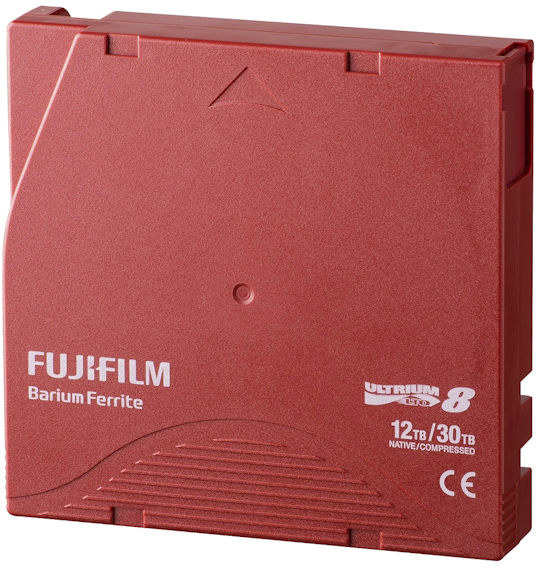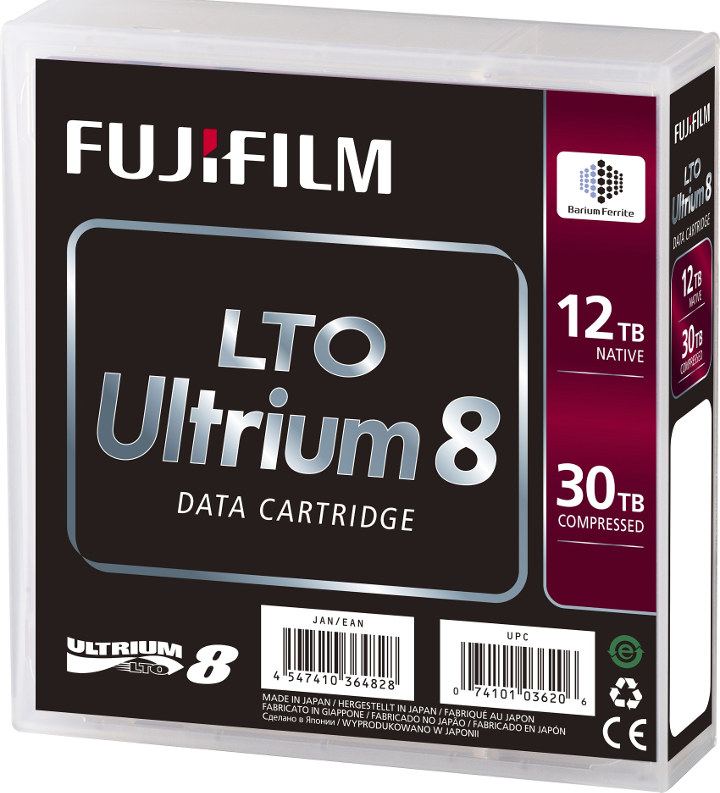What year is this? 2019. So I was a little surprised when I saw the news about Fujifilm recently releasing a 12TB magnetic tape, as I truly thought those were relics of the past.
But apparently, magnetic tapes are still a thing in some countries such as the United States in applications where a large amount of data needs to be stored over an extended period of time.
Fujifilm LTO-8 (Linear Tape-Open Ultrium8) data cartridge was unveiled last month with 12TB native capacity, up to 30TB compressed capacity, and data rates of 360 MB/s.
Fujifilm is said to be the world’s largest manufacturer of magnetic tapes, and since there’s virtually no demand in Japan, most of the tapes are exported.
Nikkei Xtech reports the maximum capacity of the new magnetic tape is double the one of Fujifilm’s LTO-7 previous generation magnetic tape. The LTO-8 cartridge includes a 960m-long, 1.265cm-wide magnetic tape with 6,656 tracks for data and the magnetic head can read and write on up to 32 tracks at the same time.
The press release from Fujifilm further explains the tape is made of barium ferrite (BaFe) magnetic particles and lists some of the advantages of magnetic tapes over HDDs:
- The LTO8 has superior TCO to HDD capable of holding a large amount of cold data at low cost.
- Creates an “air gap” data protection, physically isolated from the network, which minimizes the risk of data damage or loss caused by system failures, infection with computer viruses and cyberattacks.
- An accelerated life test has indicated that magnetic tape, with greater stability, is reliable to store data for more than 50 years.
Magnetic tapes are specifically designed for “cold data storage”, meaning for the retention of inactive data such as backups, or other data generated a while time ago and seldom accessed.

Jean-Luc started CNX Software in 2010 as a part-time endeavor, before quitting his job as a software engineering manager, and starting to write daily news, and reviews full time later in 2011.
Support CNX Software! Donate via cryptocurrencies, become a Patron on Patreon, or purchase goods on Amazon or Aliexpress






